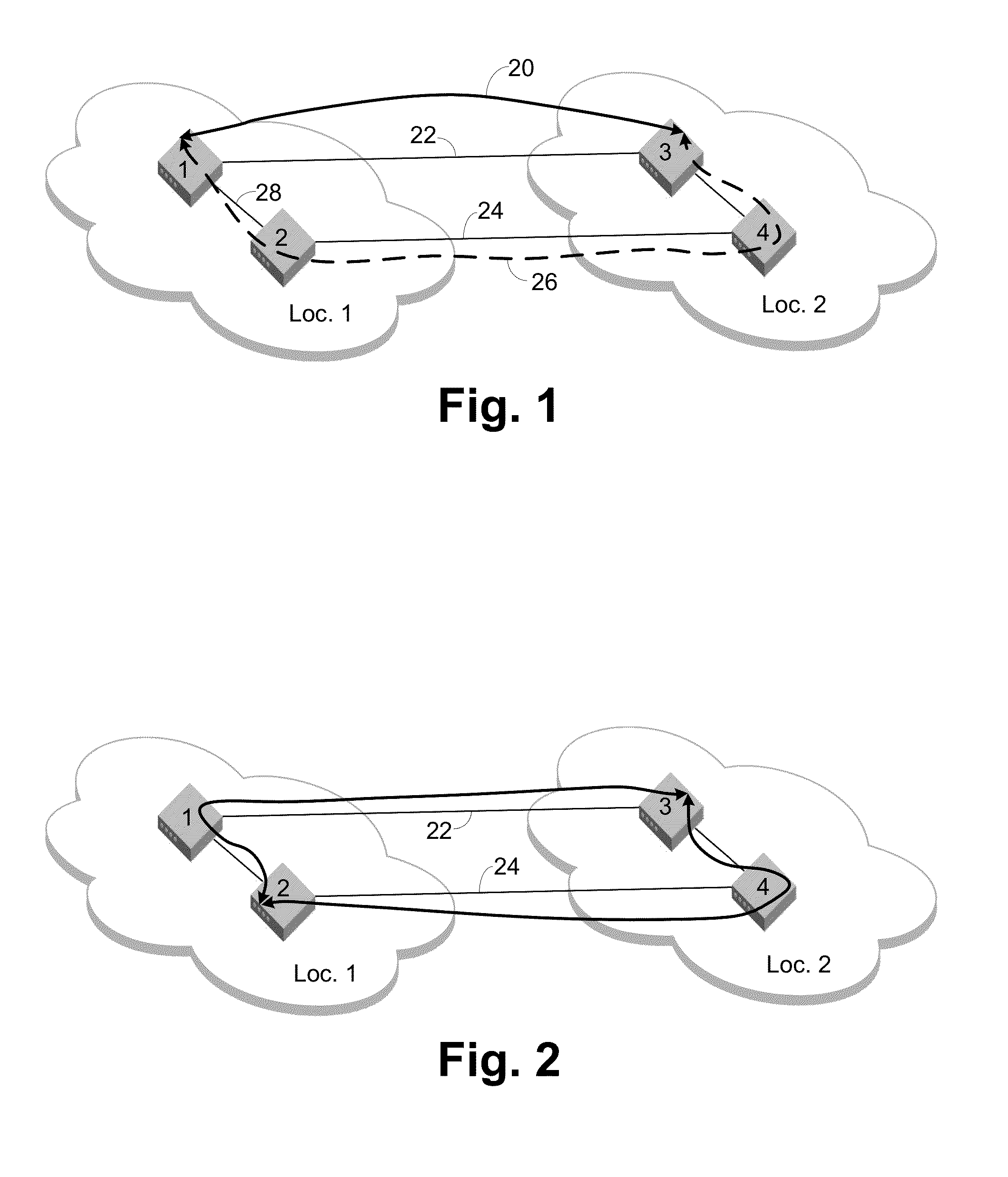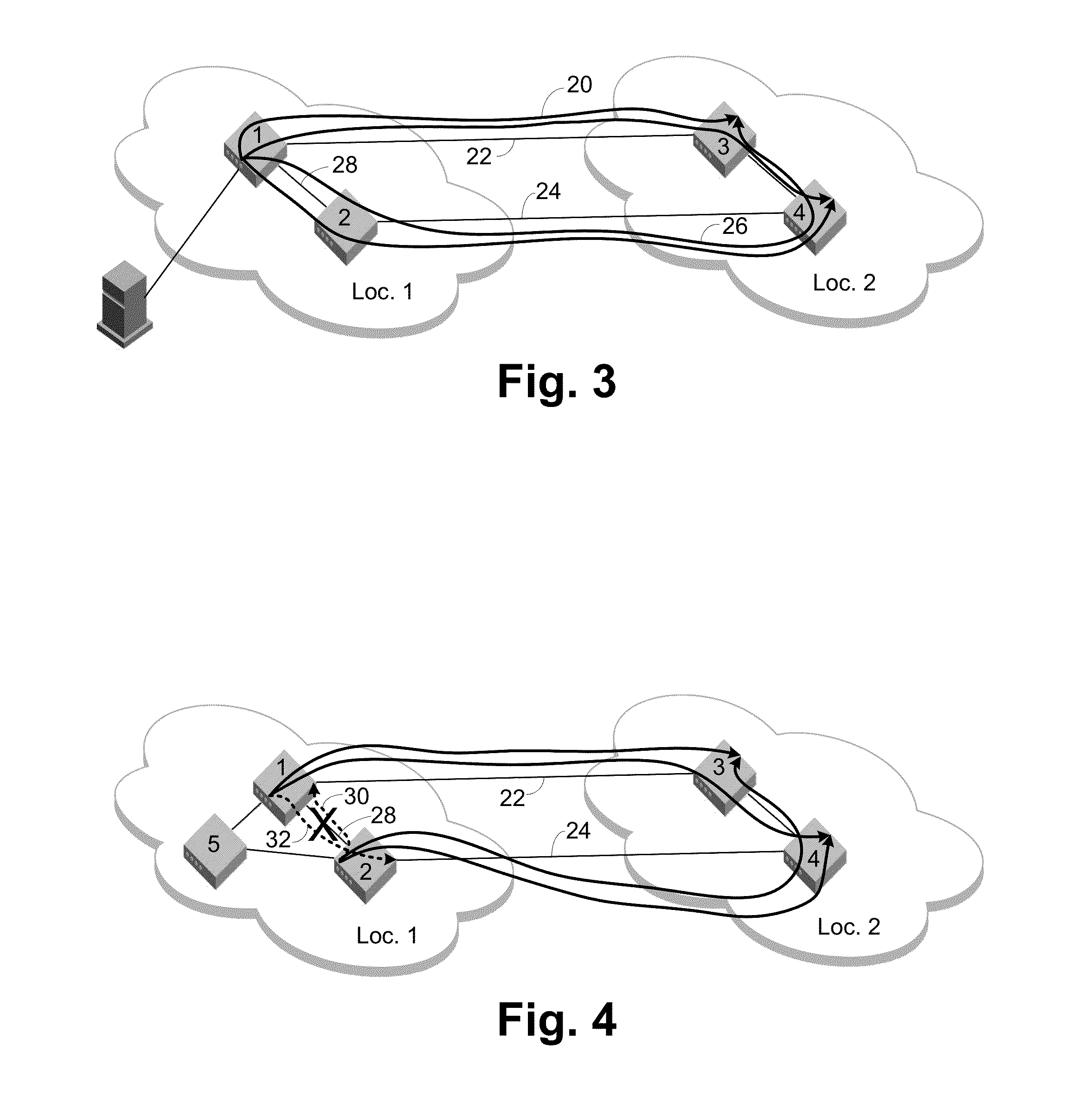Method and Apparatus for Enhanced Routing within a Shortest Path Based Routed Network Containing Local and Long Distance Links
a technology of local and long distance links and enhanced routing, applied in the field of network routing, can solve the problems of affecting the size to which the network can grow, increasing congestion and traffic back-pressure in the fabric, and high cost of the technology and infrastructure needed
- Summary
- Abstract
- Description
- Claims
- Application Information
AI Technical Summary
Benefits of technology
Problems solved by technology
Method used
Image
Examples
Embodiment Construction
[0033]FIG. 1 shows a simple example network that demonstrates the principles of non-shortest path routing. Assume there are one or more devices attached to switch 1 in location 1 and they are communicating with one or more devices attached to switch 3 in location 2. Following shortest path routing rules, the path 20 between these devices uses the directly connected link 22 as represented by the solid black line. If the required throughput of these devices is greater than the available bandwidth of the link 22, then the link 22 is the bottleneck point. The devices can only pass as much traffic as the link 22 can handle. If the inter-location hops are long distance links, they are likely to be the greatest source of delay for a frame traversing between the locations. Due to the shortest path routing rules, these devices would be unable to use bottom link 24 between switches 2 and 4.
[0034]Since long distance hops typically have a high latency in comparison to the short hops within a lo...
PUM
 Login to View More
Login to View More Abstract
Description
Claims
Application Information
 Login to View More
Login to View More - R&D
- Intellectual Property
- Life Sciences
- Materials
- Tech Scout
- Unparalleled Data Quality
- Higher Quality Content
- 60% Fewer Hallucinations
Browse by: Latest US Patents, China's latest patents, Technical Efficacy Thesaurus, Application Domain, Technology Topic, Popular Technical Reports.
© 2025 PatSnap. All rights reserved.Legal|Privacy policy|Modern Slavery Act Transparency Statement|Sitemap|About US| Contact US: help@patsnap.com



